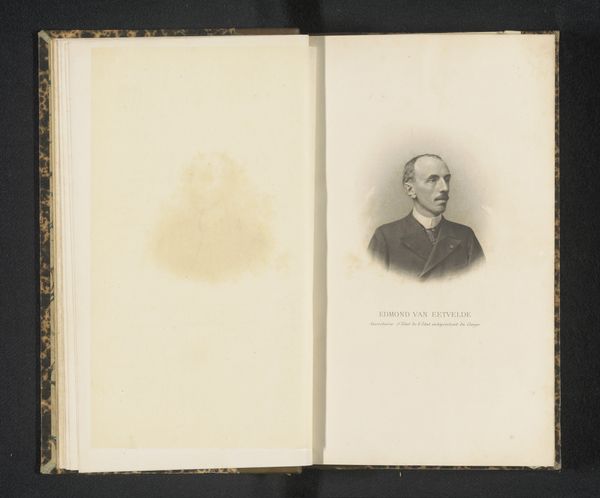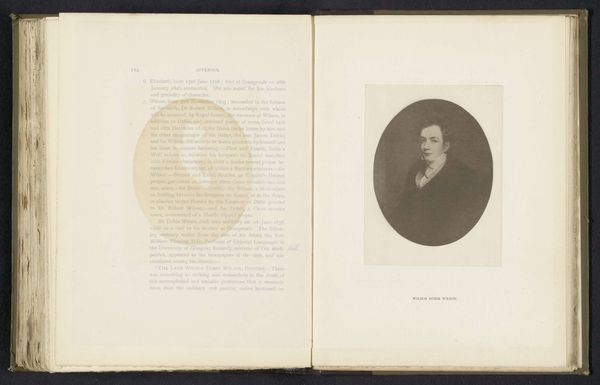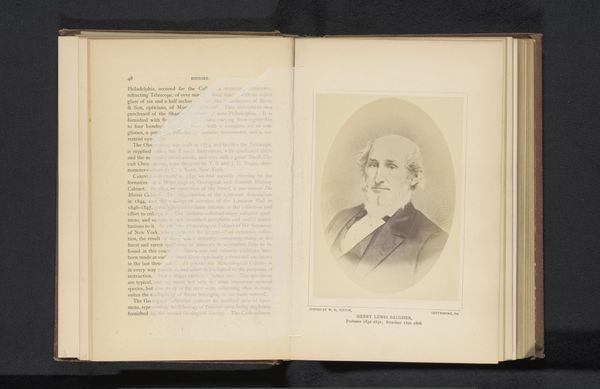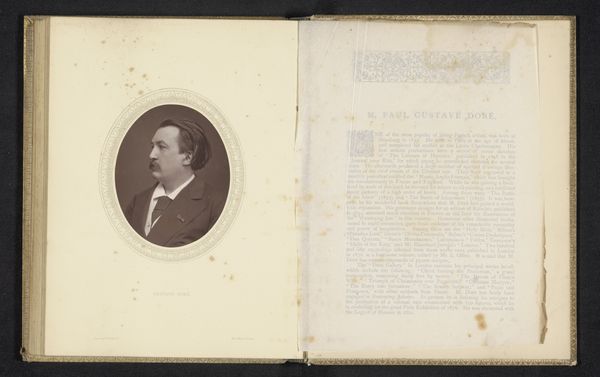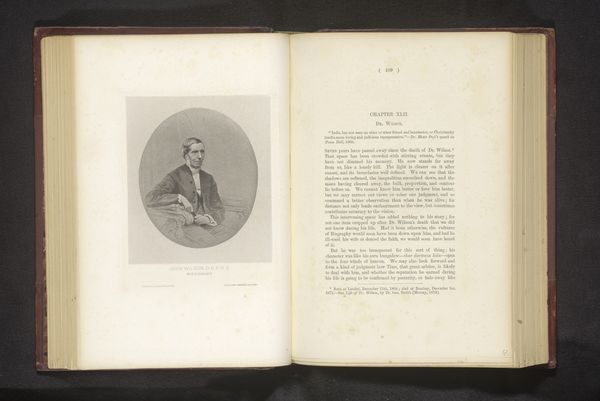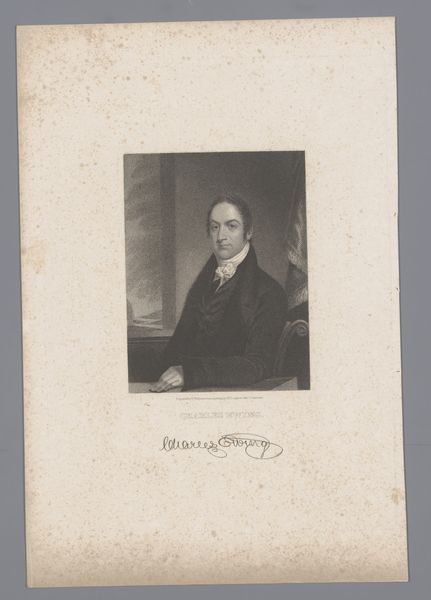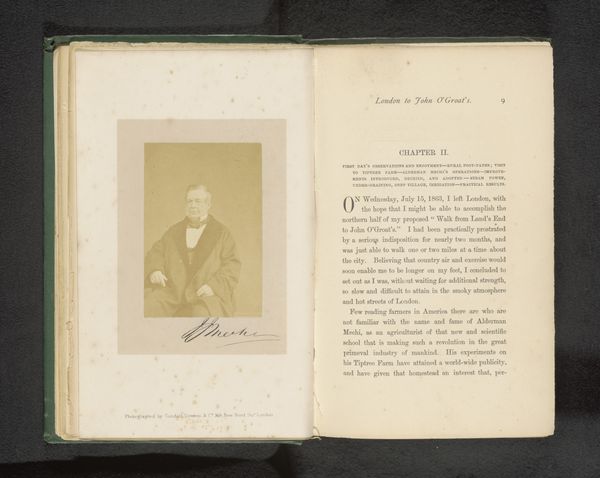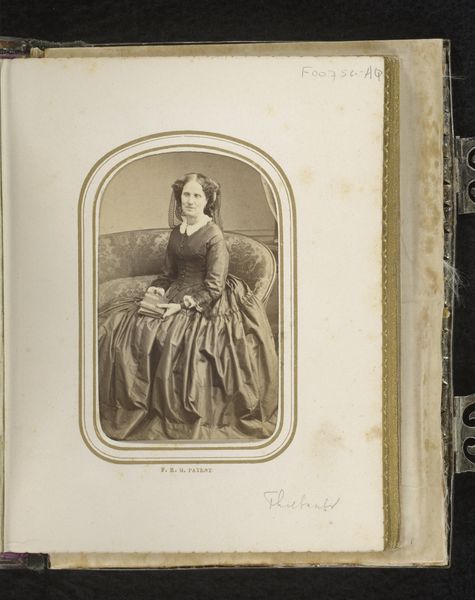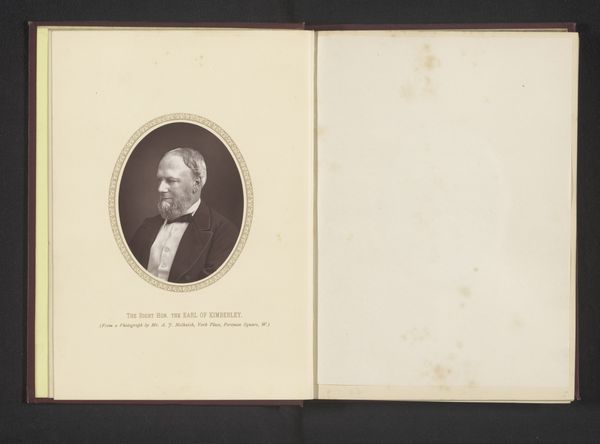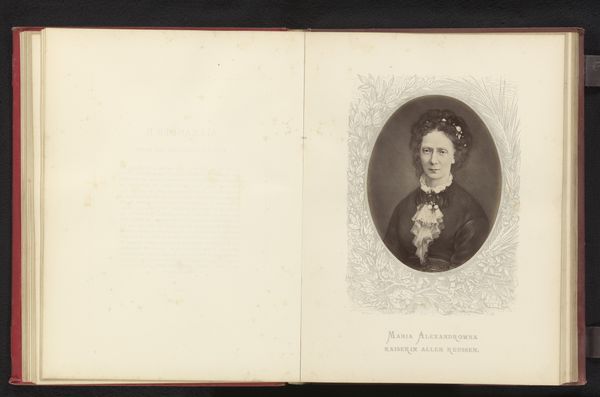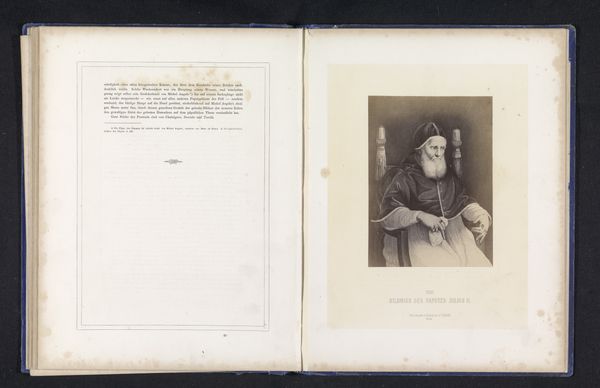
#
aged paper
#
homemade paper
#
paper non-digital material
#
paperlike
#
sketch book
#
hardpaper
#
thick font
#
letter paper
#
paper medium
#
historical font
Dimensions: height 412 mm, width 288 mm, thickness 56 mm, width 576 mm
Copyright: Rijks Museum: Open Domain
Editor: So, here we have an open book titled "The Drawing Room Portrait Gallery of Eminent Personages vol. II," dated 1861, by diverse manufacturers. The pages are quite yellowed and filled with dense text and an engraved portrait. It feels almost… spectral, like peering into a forgotten era. What jumps out at you? Curator: The pairing of portrait and text immediately speaks of cultural memory, doesn't it? The sitter, carefully rendered, and the text, presumably detailing his achievements, are both designed to fix him in the public consciousness. Notice how the composition echoes established visual tropes for portraying authority. Editor: Yes, I see that – the confident pose, the academic robe… what symbols are in play? Curator: Absolutely. His attire, his pose – each element is laden with symbolic meaning, pointing towards learnedness and status. Consider, too, the deliberate contrast between the visually arresting portrait and the dense block of text, suggesting a dialectic between image and word in constructing his identity. The book itself as a vehicle, a reliquary, to maintain prestige. Editor: It's interesting how the book format gives it an intimate feel, like we’re invited to connect with history directly. Do you think it alters our experience compared to seeing this portrait on a wall, for instance? Curator: It's more private, more academic. Displaying it in the house marks someone with specific intellectual tastes. By situating the portrait within a book, the artist links the sitter's image with the wider cultural project of preserving knowledge and perpetuating ideals, even if those ideals are fading in our time. Editor: That’s a completely different reading than my first impression! I really appreciate how the layers of symbolism and cultural memory are revealed here. Thanks so much. Curator: Indeed, observing such period images gives an opportunity to evaluate which cultural images survived – or better, how the significance has evolved and what this says about present desires.
Comments
No comments
Be the first to comment and join the conversation on the ultimate creative platform.
